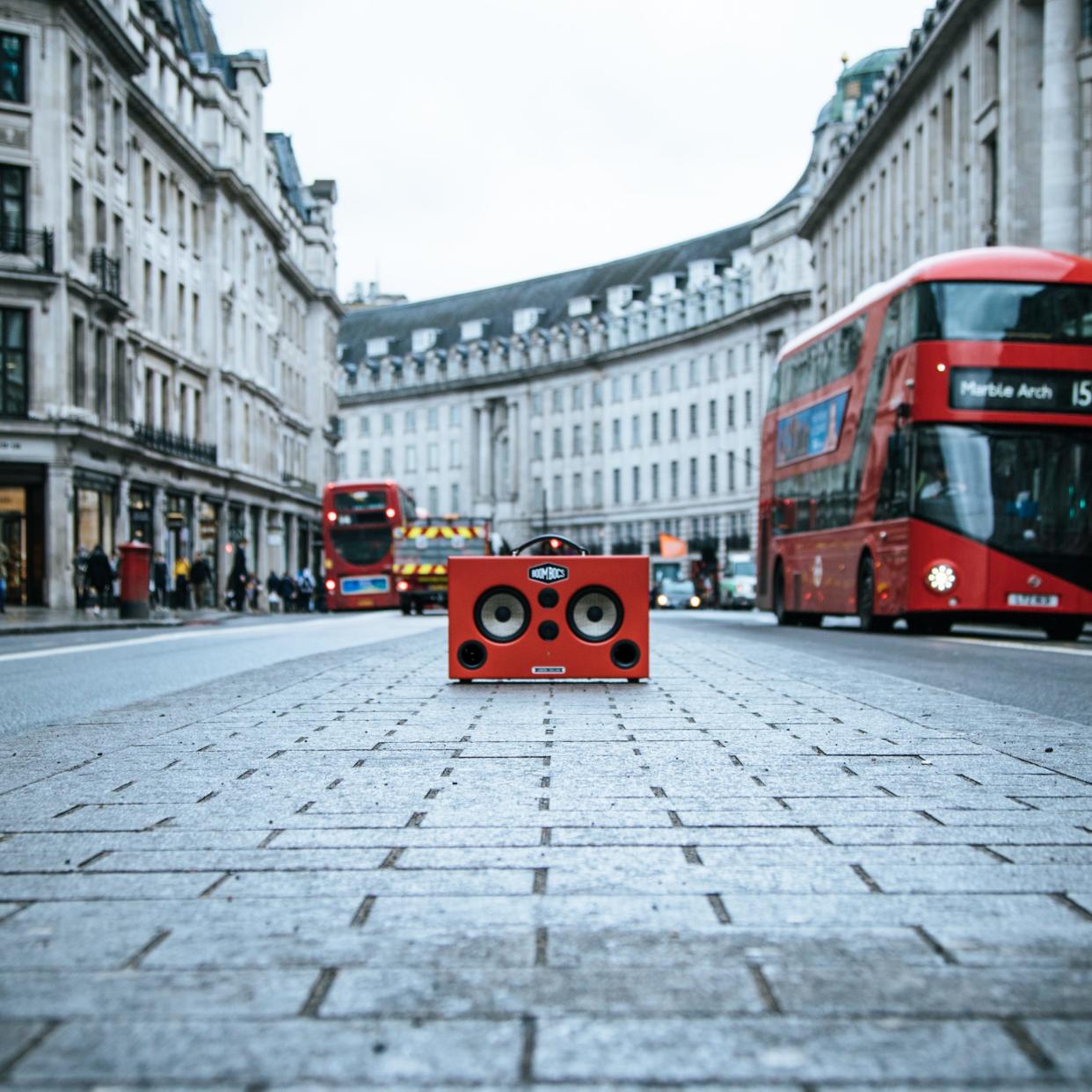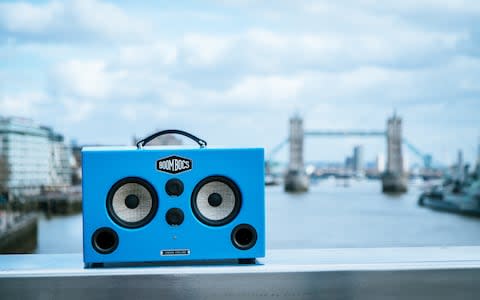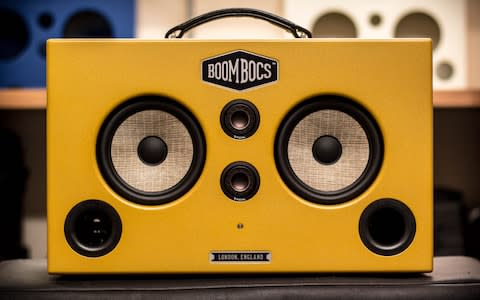Making noise: the boombox gets a re-invention

All the talk of retro in these "pages" tends to obscure the fact that much of the style is merely cosmetic. What looks old is, well, totally new.
The current Volkswagen Beetle or Fiat 500 had little more than their badges in common with the originals. When it comes to kitschy-looking music-making equipment, like the plethora of Dansette doppelgängers flooding the low end of the market, you can be pretty sure that the only thing shared with circa-1960 record players will be the units’ spindly legs.
It was only a matter of time that the prevailing mode of sound reproduction in the home and on the move – wireless speakers – would find some historical touchstone to exploit for its form and looks. Of course, there are numerous wireless speakers out there, masquerading as everything from 1950s microphones to wooden-enclosed constructs reminiscent of valve radios. The only thing that hadn’t been updated - until now that is - was the back-breaking portable of the 1970s.

Because of political correctness, we ought not use the coolest name ever applied to a piece of consumer electronics: the “ghetto blaster". Instead, we must refer to these self-contained players – which, in their earlier guise, would have employed AM/FM radio and music-cassettes as their main sources – as “boomboxes.” This has evolved, with utter genius, into the all-new BoomBocs.
Brixton-based designer Jonny Williams (located in what once was, incidentally, the British capital for boomboxes, with a diet of reggae to challenge their bass capabilities) has performed a complete re-think. As he is a sound and touring engineer who has worked on productions for such luminaries as Liam Payne, Kylie Minogue, All Saints, Jessie Ware and Kwabs, his standards are much higher than those who designed the primarily plastic noisemakers that gave birth to the first mega-portables – mainly Japanese companies simply concerned with cramming in as much tech as they could fit in the chassis.
A canny observer realises instantly that Walker takes sound more seriously, even if he has chosen to house the creation in a form once known for volume as its overriding priority over sound quality.

Not so in 2018. The BoomBocs uses tweeters – speakers that cover the important high frequencies – made by Focal in France. As this company produces drive units for some of the most highly regarded speakers available today, for their own brand and others, you can approach the BoomBocs without fear of spitty, hissy, headache-inducing treble.
All BoomBocses are handcrafted in South London using moisture-resistant MDF. Three levels of BoomBocs are offered, differing in their finishes. The Classic and Deluxe are treated to acid-catalyst gloss paint while the Super Deluxe gets a polyester resin coating with metal powder.
All occupy a healthy volume of 500x305x224mm and weigh 9.5kg, and the range of visual options is extensive with the Classic BoomBocs primary colour options, the Deluxe metallic finishes, the Super Deluxe's liquid metal collections, and for the fanatical individualist, there are custom artwork ranges.
So far, so pretty. At this price level, commencing at £699 for the most basic model, performance matters. This is no £49 plastic Bluetooth construct with sonic merit to match a mobile phone’s hiss. The BoomBocs’ power rating is 200W into 4 ohms from its built-in Class D amplifier, which is hi-fi territory, so one can anticipate room-filling capabilities. This drives two 6.5in flax-sandwich cone woofers and two 1.75in inverted dome tweeters – serious stuff, way beyond the boombox innards of yore.

Its digital processing is “above CD quality”, while the connectivity includes both Bluetooth and good, old-fashioned hardwiring via a socket on the back, so that you can stream to your heart’s content as well as accessing the library stored on your laptop, tablet or smartphone. Operation is via mains or battery, with a two-hour charge providing 15-20 hours playing time.
At last, the shoulder-breaking sound machines of the 1970s have found their much-deserved reincarnation. This is the stuff of SuperFly, Shaft, Cleopatra Jones, street parties and non-stop James Brown. The good news is that BoomBocs left the noise behind. Now, you can hear, as well as feel the funk.
From £699, boombocs.com
Sign up for the Telegraph Luxury newsletter for your weekly dose of exquisite taste and expert opinion.

